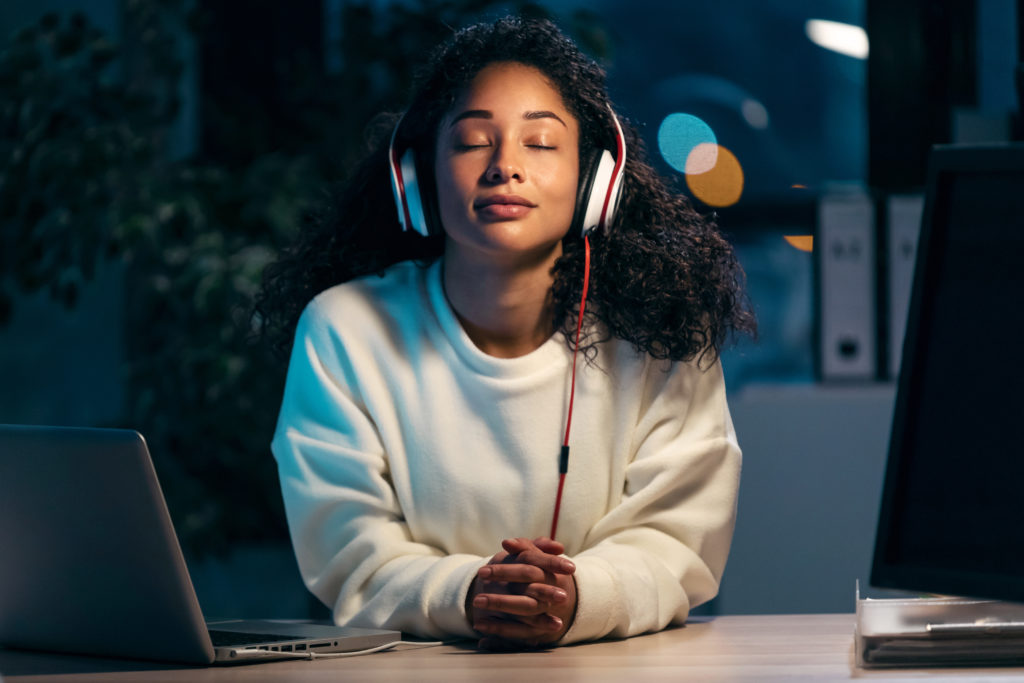No products in the cart.
Music has the power to make or break your video content. The right clip can make your video even more effective, engaging your audience more effectively than visuals alone. But if you’re not careful, you might accidentally violate copyright laws in your attempt to choose the right song.
Still learning the difference between acceptable and not-so-acceptable music use? Let us be your guide!
Understanding Copyrighted Music for Video Content
Music copyright law can be difficult to understand for a few reasons.
First, the copyright is typically split between the record label and the music’s publisher. In most cases, the label owns the copyright for the recording, while the publisher owns the copyright for the melody and lyrics.
Because of this split, in order to use a song in your video legally, you need licenses for both elements separately: a synchronization license (sometimes shortened to “sync license”) to use the song from the publisher, and a master license to use the recording from the record label.
Second, there are a ton of misconceptions about how to use music legally in a video. Most prominently, many people think that you can just disclose that you don’t own the copyrighted music in order to use it, but that’s not the case. Giving credit for the copyrighted music doesn’t get around the copyright law itself, meaning you still can’t use it in your content.
If you’re still tempted to use copyrighted music illegally, let’s explore a few of the most common issues you may run into.
Consequences of Using Copyrighted Music Without Permission
If you use a song without having the proper license(s) in place, you run the risk of a number of consequences both immediately and in the future. Here’s an incomplete summary of the outcomes you may experience.
In the short term, distribution platforms like YouTube and Instagram are likely to flag your video for copyright violation. If your video gets blocked or muted for this reason, you may accidentally send your audience to a broken link. You may also lose valuable data regarding your video’s performance up until it was removed.
And before you celebrate your video’s successful publication, remember that even if it uploads without any blocks, it can be flagged and removed at any time.
In the event that YouTube doesn’t block your video, it can also end up with a copyright claim, which allows ads to play within your video and removes the opportunity to monetize the content through the YouTube Partner Program.
In the long term, you also face legal action from the song’s record label and/or publisher for copyright violation. The potential penalties? Imprisonment for up to five years and fines up to $250,000. Not exactly a situation you want to find yourself in.

How to Choose Legal Music for Videos
If you need access to a particular piece of music for your video, you’ll need to negotiate a licensing deal with both the publisher and the record label. In most cases, you’ll either negotiate a pay-per-use deal or an unlimited use deal.
In a pay-per-use deal, you’ll pay a small fee each time your video is played. In an unlimited use deal, you’ll pay a flat rate (regardless of views) to have access for a given timeframe.
If you obtain both the sync license and the master license successfully, you can share your video freely with the music intact. The easiest way to obtain these licenses is through a website that specializes in selling music rights for video content, but if you’re hoping to use a track from a smaller artist or record label, you may be able to reach out to them directly to start the conversation.
Not willing to jump through those hoops? Here are a few tips and tricks to make the process easier.
1) License through a music library
Since this is such a common problem for content creators, there are a number of reputable websites that house a library of royalty-free audio files. Storyblocks and Pond5 are two examples (and they both also offer stock footage, too!). Before you commit to an audio clip from these kinds of sites, just make sure you read about the license you’re purchasing and any limitations or exceptions that may be attached.
2) Search for royalty-free music from smaller creators
If you’re open to working with a smaller or newer artist, you may be able to obtain licenses more easily. Since these creators are more accessible, negotiating licensing terms will be quicker and simpler than with larger, more established creators. Just make sure you get both licenses (the sync license and the master license) if the rights are split.
3) Create your own audio
Finally, if you happen to have the skills to create your own music or audio clip, you can always do it yourself. Anything you personally create can be used in your video content without a license.
Facing the Music
Adding music to your video content is one of the more complicated steps, especially for self-made content creators. But once you understand how the landscape works, it’s not as challenging as it may have originally seemed. When in doubt, skip any music clip that you’re not 100% sure you can use. Better safe than sorry!
The post How to Use Music Legally in Your Marketing Videos appeared first on Lemonlight.
* This article was originally published here

